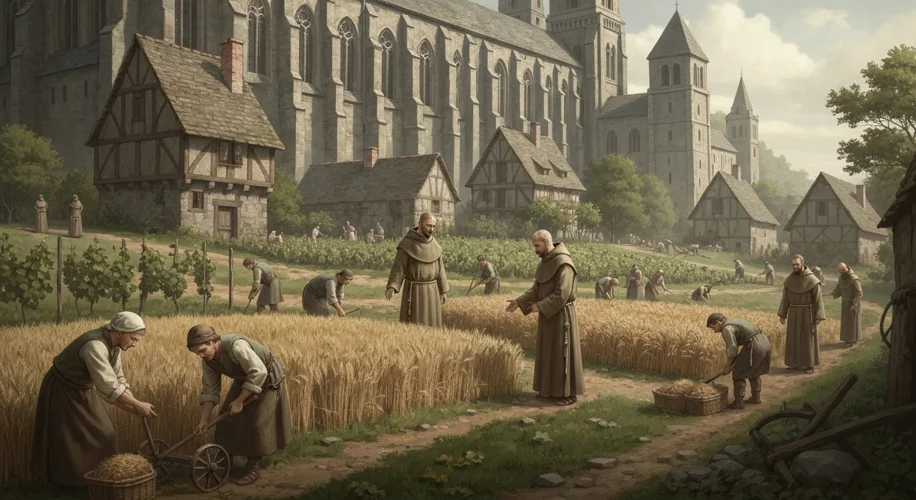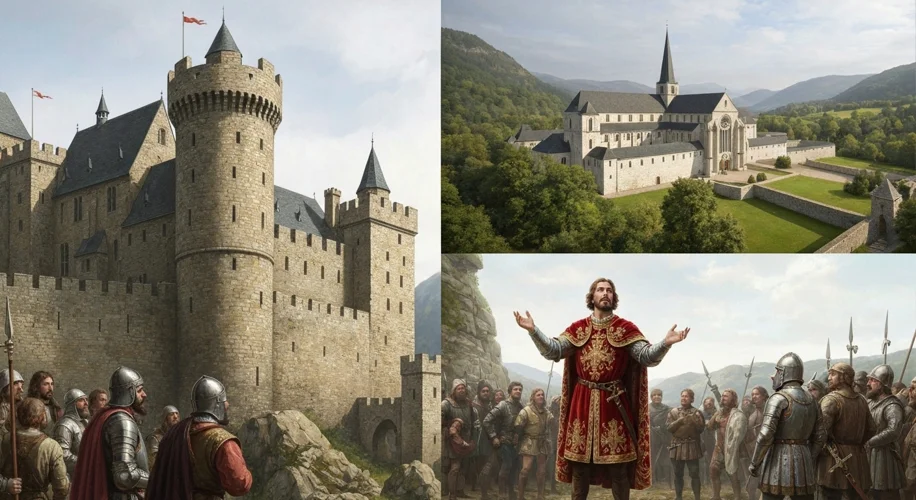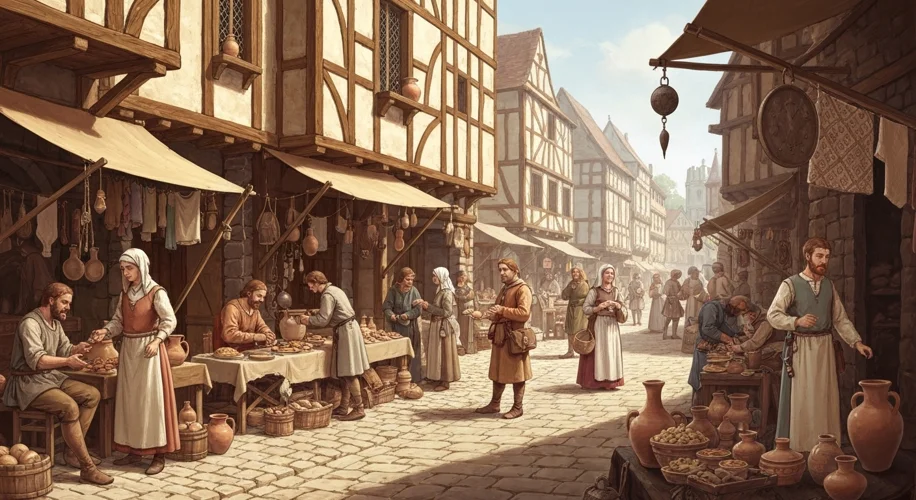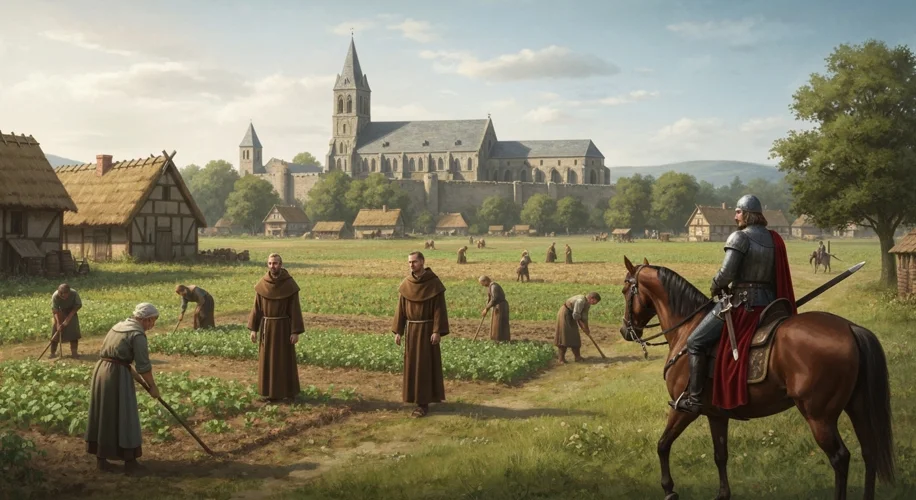Imagine stepping back in time to late medieval and early modern Europe. Your life, your livelihood, your very sense of order, are dictated not by a distant king or a local lord in a castle, but perhaps by the stern, robed figures of a powerful monastic order. In an era where faith and feudalism were inextricably linked, the experience of ordinary folk could vary dramatically depending on whether their overlord wore a crown or a cowl.
For centuries, monastic orders like the Teutonic Knights, the Knights Hospitaller, or powerful Benedictine abbeys were not merely spiritual centers but significant economic and political powers. They held vast tracts of land, commanded armies, administered justice, and collected revenues. This was particularly true in regions where secular rulers were weaker or where the Church had been granted extensive temporal authority. Think of the Teutonic Knights, who carved out a formidable state in Prussia, ruling over pagan and later Christian populations with a military and administrative structure as disciplined as any secular kingdom.

Life under the administration of a monastic order often meant a life governed by religious law and custom, alongside feudal obligations. The abbot or grand master was both spiritual leader and temporal lord. Justice might be dispensed in monastic courts, with punishments often reflecting the religious sensibilities of the time – heresy or blasphemy carrying severe penalties. Economic conditions could be surprisingly stable; monasteries were often highly organized agricultural estates, employing efficient farming techniques passed down through generations. They were also centers of learning and charity, providing hospitals and alms for the poor, although this generosity was often tempered by a strict adherence to religious doctrine.
The daily life of a peasant farmer under monastic rule would likely have involved tilling lands owned by the abbey, paying tithes and rents in kind or coin to the monastic coffers, and participating in communal religious life. The rhythms of their year would be dictated by the agricultural calendar and the church’s liturgical year, with monastic feasts and fasts taking pride of place. The spiritual guidance was constant, with monks serving as parish priests or overseeing the spiritual welfare of the lands they controlled. However, this close proximity to spiritual authority could also mean less personal freedom. The monks’ moral codes and directives permeated daily existence, from permissible work on holy days to the regulation of social conduct.
Contrast this with life under a secular prince or lord. While feudal obligations – military service, labor, rents – were universal, the nature of governance, justice, and the influence of religion could differ significantly. Secular rulers, while often deeply religious, were primarily concerned with consolidating their power, expanding their territories, and ensuring the loyalty of their vassals. Justice under secular rule might be swifter, perhaps more arbitrary, and often focused on maintaining peace and order within the prince’s domains. Royal courts, feudal courts, and manorial courts all had their own jurisdictions and procedures.

Economically, secular lords were often less systematic in their land management than monastic orders. While some were effective administrators, others were more inclined to extract as much wealth as possible from their lands to fund their military campaigns or lavish courts. The lives of peasants might be marked by more immediate concerns: the lord’s wars, his demands for soldiers or supplies, or the vagaries of royal taxation. Religious life, while still central, might feel less omnipresent than in a theocracy-like monastic domain. The local priest was the primary spiritual guide, but the overarching governance was secular, with the prince’s authority taking precedence in temporal matters.
Consider the stark difference between a village in Prussia directly administered by the Teutonic Knights, where every aspect of life was shaped by the order’s military and religious mission, and a village in Bavaria under the rule of a Duke. In the latter, the Duke’s priorities – his feuds with neighboring dukes, his support for the Holy Roman Emperor, his courtly life – would filter down to the peasants, but perhaps with less direct religious oversight on their daily activities. The justice system might be more concerned with treason against the Duke than sacrilege against God, though both could certainly incur punishment.

However, it’s crucial to avoid oversimplification. Many secular rulers sought legitimacy and guidance from the Church, often granting significant privileges to monastic orders within their realms. Conversely, monastic orders often wielded considerable political influence, acting as advisors or even regents for young secular rulers. The boundaries were frequently blurred.
The impact on the commoner was profound. Under monastic rule, there was often a sense of ordered piety, a life structured by faith and discipline, with the potential for greater stability but also for a more constrained existence. Under secular rule, life could be more volatile, influenced by the ambitions of princes and the demands of warfare, but perhaps offering more autonomy in private life. The justice meted out, the taxes levied, the very rhythm of daily existence – all these were shaped by who held the ultimate authority: the man of God or the man of the sword.
Ultimately, the choice between monastic and secular rule was not one the common people typically made. Their lives were lived within the frameworks established by these powerful institutions, navigating the complex interplay of religious devotion and earthly power that defined medieval and early modern Europe. Understanding these differences allows us to see how deeply faith, governance, and daily life were intertwined for the vast majority of people who toiled the land and raised their families under these very different, yet equally powerful, masters.

